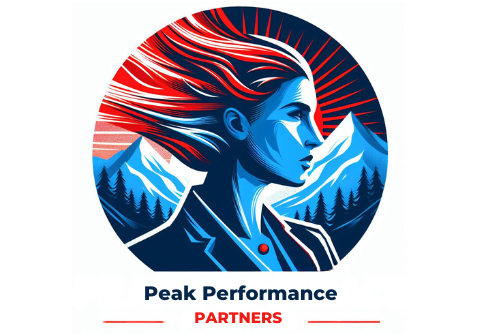
I’m here to help you with the crucial first step of building a high-functioning team: laying a solid foundation. This isn’t just about assigning roles, it’s also about aligning each team member with the collective mission and objectives. Choose goals that resonate with everyone, as this drives engagement and provides a beacon for decision-making.
You’re going to find out about the importance of team composition. Each individual brings unique strengths and perspectives to the table, so make sure to assemble a group with complementary skills that support your goals. This strategic mix is the secret sauce that can transform a group of individuals into a cohesive unit.
Don’t worry too much about conflicts arising from differences; focus on nurturing an inclusive team culture from the get-go. In my opinion, workshops and team-building activities are invaluable. These foster understanding and unity, creating an environment where open, transparent communication is the norm.
Once you’ve established a clear direction and a supportive culture, maintaining transparent communication channels becomes the backbone of team excellence. Regular check-ins, clear documentation, and open dialogue ensure everyone stays on the same page and can contribute to the team’s success.
As the foundation solidifies, it’s critical to shift focus towards maximizing the team’s collective potential by harnessing the rich tapestry of diversity within. That takes us to our next vital segment – strategies for Diversity and Inclusion, which not only bolster creativity but are also essential to building truly high-performing teams.
Harnessing the Power of Diversity and Inclusion
I’m going to talk about why your team’s varied shades of genius are its secret weapon. Diversity isn’t just a buzzword; it’s the engine that drives innovation and problem-solving within high-performing teams. When I mention diversity, this includes cultural backgrounds, work experiences, life perspectives, and even different schools of thought.
In my opinion, it’s crucial to create an environment where every team member feels valued and heard. This kind of culture doesn’t sprout up overnight. It requires your intentional effort in crafting strategies that not only bring together diverse individuals but also genuinely include their contributions in the team’s fabric.
You’re going to find out about creating equitable opportunities for your team members to excel. This means recognizing and dismantling any systemic barriers that might prevent someone from contributing to their fullest potential. I’ll also share how to use benchmarks and goals to keep your team’s diversity and inclusion efforts on track.
Don’t worry too much about getting everything perfect out of the gate. The key is to start. You can always adjust your approach down the road as you learn more about the unique dynamics of your team. Remember, diversity and inclusion are about progress, not perfection, and it’s the incremental steps that culminate in significant results.
Striking the Balance: Autonomy and Collaboration
 You’re going to find out about empowering team members, a concept that might seem at odds with the idea of close collaboration. Yet, in high-performing teams, there’s a sweet spot where autonomy feeds into collective success. Giving team members space to manage their areas of expertise can drive innovation and job satisfaction.
You’re going to find out about empowering team members, a concept that might seem at odds with the idea of close collaboration. Yet, in high-performing teams, there’s a sweet spot where autonomy feeds into collective success. Giving team members space to manage their areas of expertise can drive innovation and job satisfaction.
Don’t worry too much about team members going off-track. With the right framework, autonomy encourages a sense of ownership and responsibility. It’s about trust. By setting clear expectations and giving individuals the freedom to approach tasks in their own way, you’re signaling confidence in their capabilities.
I’m here to help you understand the benefits of collaborative problem-solving, too. When team members come together, bringing their unique perspectives to the table, you tap into the power of ‘collective intelligence.’ The synergy that comes from a group working towards a common goal often leads to solutions that are more creative and effective than those conceived by individuals working alone.
In my opinion, leadership plays a critical role in balancing autonomy and collaboration. Leaders must be adept at reading the team’s dynamics and knowing when to step in or step back. Creating an environment where team members feel supported but not micromanaged can be a game-changer.
If you want to maximize team performance, you’ll also need the right tools and practices. Utilizing collaboration platforms can make sharing information and working together much simpler. Regular team-building exercises and setting aside time for brainstorming sessions can also foster a culture of unity and co-creation.
Continuous Improvement: Training and Development
 I’m going to let you in on a little secret: investing in your team’s development is not just a one-time thing. It’s an ongoing journey that reaps rewards both for the team and the organization as a whole. You see, when team members are given opportunities to grow, they’re not the only ones who benefit; the whole team becomes more proficient, innovative, and dynamic.
I’m going to let you in on a little secret: investing in your team’s development is not just a one-time thing. It’s an ongoing journey that reaps rewards both for the team and the organization as a whole. You see, when team members are given opportunities to grow, they’re not the only ones who benefit; the whole team becomes more proficient, innovative, and dynamic.
So let’s talk about tailoring development programs to fit your team. It’s not about a one-size-fits-all solution; it’s about identifying the specific needs of your team members and providing training that’s going to help them excel in their roles. This could mean technical training, soft skills workshops, or even cross-functional training to foster better understanding and cooperation within the team.
Feedback is the compass that guides improvement. Encourage an environment where feedback is consistently shared and received constructively. It’s not just about giving feedback, though, it’s also understanding how to act on it to foster growth. Regular performance assessments, while they may seem daunting, are actually opportunities for teams to pause, reflect, and strategize for better results.
Don’t underestimate the power of motivation and commitment. Growth opportunities can light a fire under your team, pushing them to achieve more. Remember, a team that sees a pathway for development sticks together and pushes the boundaries of what’s possible.
Lastly, it’s essential to measure the effectiveness of your training and development efforts. Use metrics that align with your team’s objectives to ascertain the impact of training programs. I’m not just talking about profit margins or project completion rates. Think about team satisfaction, retention rates, and even customer satisfaction scores. This isn’t just about number crunching; it’s about ensuring that your team is on a continuous upward trajectory, in skills, in performance, and in their engagement with the company’s mission.
